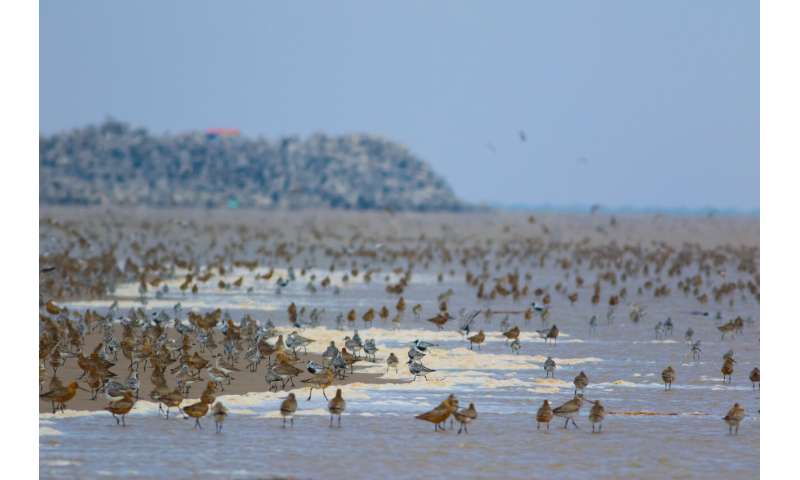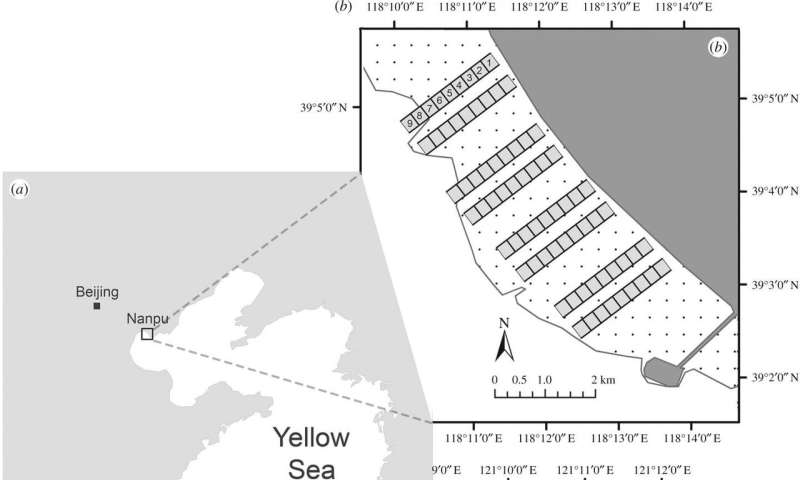A new COVID-19 variant called Mu that might be able to evade immunity from vaccines has been detected
in almost every US state
A new COVID-19 variant called Mu might be able to evade the immunity people get from vaccines, Insider reported.
The Mu variant has been detected in 47 US states and the District of Columbia, according to data from Outbreak.info.
Only Nebraska, Vermont, and South Dakota are yet to detect a case, the data says.
A new variant of COVID-19, which the World Health Organization (WHO) says could have the ability to evade the immunity people get from vaccines and previous infections, has been detected in almost every US state, according to data from epidemiology and genomic database Outbreak.info.
Called Mu, the B.1.621 variant was first detected in Colombia in January this year. As of September 4, cases of the strain have been reported in 47 US states and the District of Columbia, Newsweek was first to report.
The only states without reported cases are Nebraska, Vermont, and South Dakota, according to Outbreak.info's data.
The strain is currently most prevalent in Alaska, where data suggests that 139 reported cases account for 4 percent of the total 3,837 sequenced samples.
California has the highest number in terms of raw numbers, the data show, with 232 reported cases of the B.1.621 variant out of 139,930 sequenced. This accounts for less than one percent of those sampled.
The Mu variant accounts for fewer than one percent of total COVID-19 cases, with the Delta variant dominant in the US.
Earlier this week, Mu was added to the WHO's "of interest" list of variants.
Anthony Fauci, President Joe Biden's chief medical officer, said Thursday that the Mu variant did not represent an "immediate threat" to the US.
"This variant has a constellation of mutations that suggests that it would evade certain antibodies, not only monoclonal antibodies but vaccine- and convalescent serum-induced antibodies," Fauci said during a COVID-19 press briefing on Thursday. "But there isn't a lot of clinical data to suggest that. It is mostly laboratory in-vitro data," he added.
Fauci said that health officials are "keeping a very close eye" on the situation.
The WHO noted in its weekly bulletin that further studies would need to be done on the mutated variant to see if it can evade immune defenses to COVID-19, Insider's Cheryl Teh reported.
James Churchward - Wikipedia
Churchward was born in Bridestow, Okehampton, Devon at Stone House to Henry and Matilda (née Gould) Churchward. James had four brothers and four sisters. In November 1854, Henry died and the family moved in with Matilda's parents in the hamlet of Kigbear, near Okehampton. Census records indicate the family next moved to London when James was 18 after his grandfather George Gould died.
THE SACRED SYMBOLS OF MU - James Churchward
COLONEL JAMES CHURCHWARD AUTHOR OF "THE LOST CONTINENT OF MU" "THE CHILDREN OF MU" ILLUSTRATED IVES WASHBURN; NEW YORK Scanned at sacred-texts.com, December, 2003.
3 Beards Podcast: Is the Lost Continent of Mu Real?
Author Jack Churchward joins the show to talk about his books that cover The Lost Continent of Mu, a subject brought to life by the works of his great grandfather Col. James Churchward.
Lifting the Veil on the Lost Continent of Mu: The Motherland of Men
The Stone Tablets of Mu
Crossing the Sands of Time
are books Jack Churchward has penned to cover the works of his great grandfather and bring into focus on what is fact and what is fiction.
The mythical idea of the “Land of Mu” first appeared in the works of the British-American antiquarian Augustus Le Plongeon (1825–1908), after his investigations of the Maya ruins in Yucatán. He claimed that he had translated the first copies of the Popol Vuh, the sacred book of the K’iche’ from the ancient Mayan using Spanish. He claimed the civilization of Yucatán was older than those of Greece and Egypt, and told the story of an even older continent.
Col. James Churchward claimed that the landmass of Mu was located in the Pacific Ocean, and stretched east–west from the Marianas to Easter Island, and north–south from Hawaii to Mangaia. According to Churchward the continent was supposedly 5,000 miles from east to west and over 3,000 miles from north to south, which is larger than South America. The continent was believed to be flat with massive plains, vast rivers, rolling hills, large bays, and estuaries. He claimed that according to the creation myth he read in the Indian tablets, Mu had been lifted above sea level by the expansion of underground volcanic gases. Eventually Mu “was completely obliterated in almost a single night” after a series of earthquakes and volcanic eruptions, “the broken land fell into that great abyss of fire” and was covered by “fifty millions of square miles of water.” Churchward claimed the reasoning for the continent’s destruction in one night was because the main mineral on the island was granite and was honeycombed to create huge shallow chambers and cavities filled with highly explosive gases. Once the chambers were empty after the explosion, they collapsed on themselves, causing the island to crumble and



 A key difference of the Princeton research was that it included observations of the high-tide period when the middle and lower tidal flats are underwater. The researchers focused on the East Asia-Australasian Flyway, which spans from Australia to Siberia along the rapidly developing coast of China where birds stop to rest and refuel. The researchers studied birds at two well-known stopover sites in the Yellow Sea region, Nanpu (b) near Beijing and Rudong (c) outside of Shanghai. The dark squares indicate the study plots along the upper, middle and lower tidal flats (dotted area). The white areas represent the sea beyond the low-tide line. Credit: Tong Mu, Department of Ecology and Evolutionary Biology
A key difference of the Princeton research was that it included observations of the high-tide period when the middle and lower tidal flats are underwater. The researchers focused on the East Asia-Australasian Flyway, which spans from Australia to Siberia along the rapidly developing coast of China where birds stop to rest and refuel. The researchers studied birds at two well-known stopover sites in the Yellow Sea region, Nanpu (b) near Beijing and Rudong (c) outside of Shanghai. The dark squares indicate the study plots along the upper, middle and lower tidal flats (dotted area). The white areas represent the sea beyond the low-tide line. Credit: Tong Mu, Department of Ecology and Evolutionary Biology